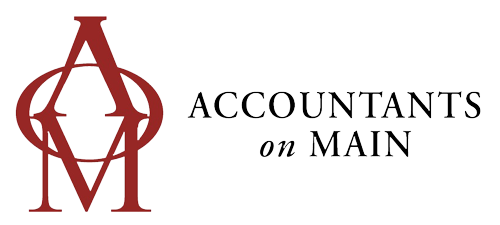Unpacking Canada’s Latest Federal Budget
Deputy Prime Minister and Minister of Finance Chrystia Freeland released the federal budget on April 16, 2024, against a backdrop of Canadians facing the significant challenge of elevated costs of living. In light of the continued economic uncertainty, measures in the budget are targeted with the stated goal of building more affordable homes, making life cost less and growing the economy.
Although there are no proposed changes to the personal tax brackets, the budget proposes an increase to the capital gain inclusion rate. The budget also suggests several amendments to the alternative minimum tax (AMT) proposals, that include reducing the negative impact on the tax treatment of charitable donations.
Freeland’s document calls for about $52.9 billion in new spending over the next five years — a significant jump over what Ottawa had said it would spend in the fall economic statement released just a few months ago.
Here’s a deeper look.
A Generous Pour for Housing
At the core of this budgetary expansion is an $8.5 billion allocation towards alleviating the housing crisis—a move that nods to the generational struggle for home ownership. By promising to steer the creation of approximately four million homes by 2031, the budget aims not only to provide a roof over more heads but to dream big in terms of urban development and sustainable living spaces.
More Affordable Homes
- Increased Housing Supply: The government is accelerating the construction of affordable homes by simplifying zoning laws and cutting red tape. Initiatives include converting underutilized federal properties into housing and incentivizing the private sector to increase housing construction.
- Home Ownership Accessibility: New tax-free savings options for first-time homebuyers and credits for renters are designed to make home ownership more accessible, particularly for Millennials and Generation Z. The government also has committed to maintaining the already well-subscribed tax-free savings account, extending mortgage amortization terms and increasing the RRSP withdrawal limit for some first-home buyers, among other measures.
Beyond Brick and Mortar: A Focus on Wellbeing and Sustainability
While housing takes a front seat, the budget does not shy away from addressing the broader spectrum of societal wellbeing and sustainable development. With a combined allocation, surpassing $8 billion, initiatives ranging from a Canada Disability Benefit, a national school food program, youth mental health funds, to substantial boosts for Indigenous infrastructure underline a commitment to fostering inclusive growth. Additionally, the move to invigorate the incentives for zero-emission vehicles and launch an energy efficiency retrofit program marks a continued commitment to environmental stewardship amidst global climate challenges.
Strengthening Healthcare
- Enhanced Public Healthcare: Significant funding is directed towards reducing the cost of pharmaceuticals and dental care, alongside the launch of a national pharmacare plan which aims to provide comprehensive drug coverage.
- Mental and Physical Health Initiatives: Investments in mental health and the introduction of new programs to support physical health reflect a holistic approach to improving the well-being of Canadians.
Economic Growth and Innovation
- Promoting Innovation and Competitiveness: The budget allocates substantial resources to foster research and development, particularly in AI and clean technologies, ensuring Canada remains at the forefront of technological innovation.
- Support for Clean Energy: With extensive funding for clean energy projects, the budget aims to position Canada as a leader in the net-zero transition, reflecting a commitment to environmental sustainability and economic growth.
Supporting Workers and Families
- Childcare and Education: The expansion of the $10-a-day childcare program and increased funding for early childhood education underscores the budget’s focus on supporting families and young children.
- Workforce Development: New initiatives to recognize foreign credentials and enhance labor mobility are expected to bolster the workforce, addressing labor shortages and enhancing productivity.
Tax Reforms: A Balancing Act
The budget also introduces a series of tax reforms aimed at ensuring “that the very wealthiest pay their fair share.” By increasing the capital gains inclusion rate from one-half to two-thirds for high-value transactions, the government expects to usher in an estimated $21.9 billion in new revenue over the next five years. This recalibration of tax duties, which spares primary residences and retirement savings from the uptick, represents an attempt to underpin spending with a strategy of wealth redistribution.
Capital Gains Tax Changes
- Increase in Inclusion Rate: Budget 2024 proposes to increase the capital gains inclusion rate from one half to two thirds for corporations and trusts, and from one half to two thirds on the portion of capital gains realized in the year that exceed $250,000 for individuals
- Effective Date: This new inclusion rate applies to gains realized made on or after June 25, 2024
- The lifetime limit will be increased to $1,250,000 from its present level of $1,016,836, effective for dispositions on and after June 25, 2024. This amount will be indexed for inflation commencing in 2026.
Accelerated Capital Cost Allowance
- Accelerated Capital Cost Allowance to allow businesses to immediately write off the full cost of innovation and productivity enhancing assets, such as computers and data infrastructure, starting immediately to January 1, 2027.
Canada Carbon Rebate for small businesses
- In respect of the government’s commitment to small and medium-sized businesses, the government proposes to return a portion of fuel charge proceeds from a province, via the new Canada Carbon Rebate for small businesses, an automatic, refundable tax credit directly for eligible businesses, sized in proportion to the number of persons they employ in the province. The Minister of Finance will specify payment rates once sufficient information is available from the 2023 taxation year.
Moving forward
If you have any questions, don’t hesitate to get in touch.

